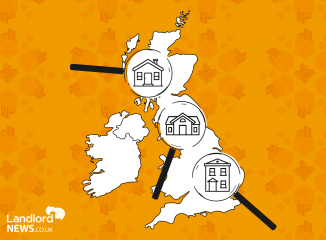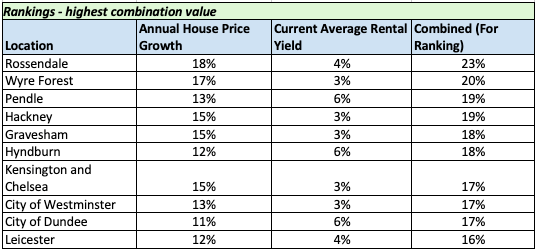Howsy researches rent price shift since property market reopened in May
Tenants have seen an increase in rent prices of 0.6% across the UK, according to research from lettings management platform Howsy.
Looking at the current cost of renting across 20 major UK cities, Howsy has researched changes since the property market reopened for business in May.
Newport has seen rents jump by 13.4%, while Nottingham (11.4%), Swansea (11.2%), Newcastle (4.4%), Glasgow (3.15), Leeds (1.6%), Sheffield (1%), Bristol (1%), Plymouth (0.9%) and Birmingham (0.6%) have also seen an uplift since May.
The platform also notes that with tenant demand falling as working from home becomes the new norm, some cities have seen a drop in the average cost of renting.
Edinburgh has seen the largest decline, down 6% from £1,085 per month to £1,020 now. Cambridge has also seen a notable decline with rents falling 5.4% since May, while London has seen the third-largest decline at -4.8%.
Manchester, Oxford, Cardiff, Bournemouth and Liverpool also make the list in terms of rental cost declines across major UK cities.
Calum Brannan, Founder and CEO of Howsy, commented: “It’s clear that the current trend of working from home has had a notable impact on the rents secured by landlords in a number of major UK cities. However, it’s fair to say that this decline is prevalent across the board and some cities still present a strong buy-to-let market with high demand continuing to push rental prices up.
“The cities to be worst hit have largely been the least affordable, such as Edinburgh, Cambridge, London, Manchester and Oxford. With many now working from home, renting in these expensive cities doesn’t make much sense and so they’ve chosen to look further afield.
“However, in more affordable cities such as Newport, it makes little difference and so tenant demand remains strong whether they are working from home or not.”
| Location | Av Rent pm – May 2020 | Av Rent pm – Oct 2020 | Change – May vs Oct 2020 |
| Newport | £578 | £655 | 13.4% |
| Nottingham | £724 | £806 | 11.4% |
| Swansea | £639 | £710 | 11.2% |
| Newcastle | £691 | £722 | 4.4% |
| Glasgow | £746 | £770 | 3.1% |
| Leeds | £767 | £779 | 1.6% |
| Sheffield | £675 | £682 | 1.0% |
| Bristol | £1,019 | £1,029 | 1.0% |
| Plymouth | £668 | £674 | 0.9% |
| Birmingham | £742 | £747 | 0.6% |
| Leicester | £697 | £697 | 0% |
| Southampton | £839 | £839 | 0% |
| Liverpool | £645 | £634 | -1.7% |
| Bournemouth | £1,000 | £981 | -1.9% |
| Cardiff | £810 | £791 | -2.3% |
| Oxford | £1,320 | £1,285 | -2.6% |
| Manchester | £836 | £807 | -3.5% |
| London | £1,582 | £1,505 | -4.8% |
| Cambridge | £1,147 | £1,085 | -5.4% |
| Edinburgh | £1,085 | £1,020 | -6.0% |
| UK Overall | £887 | £892 | 0.6% |
| Data sourced from PropertyData |






